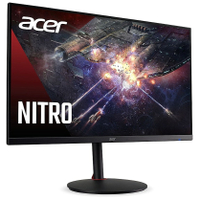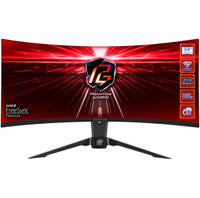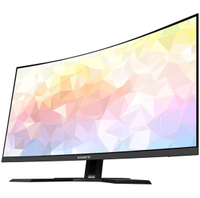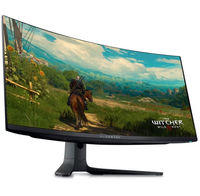I review screens for a living and these are the Prime Day gaming monitor deals I'd buy
But, when all's said and done it's 1440p FTW. Especially for less than $190.
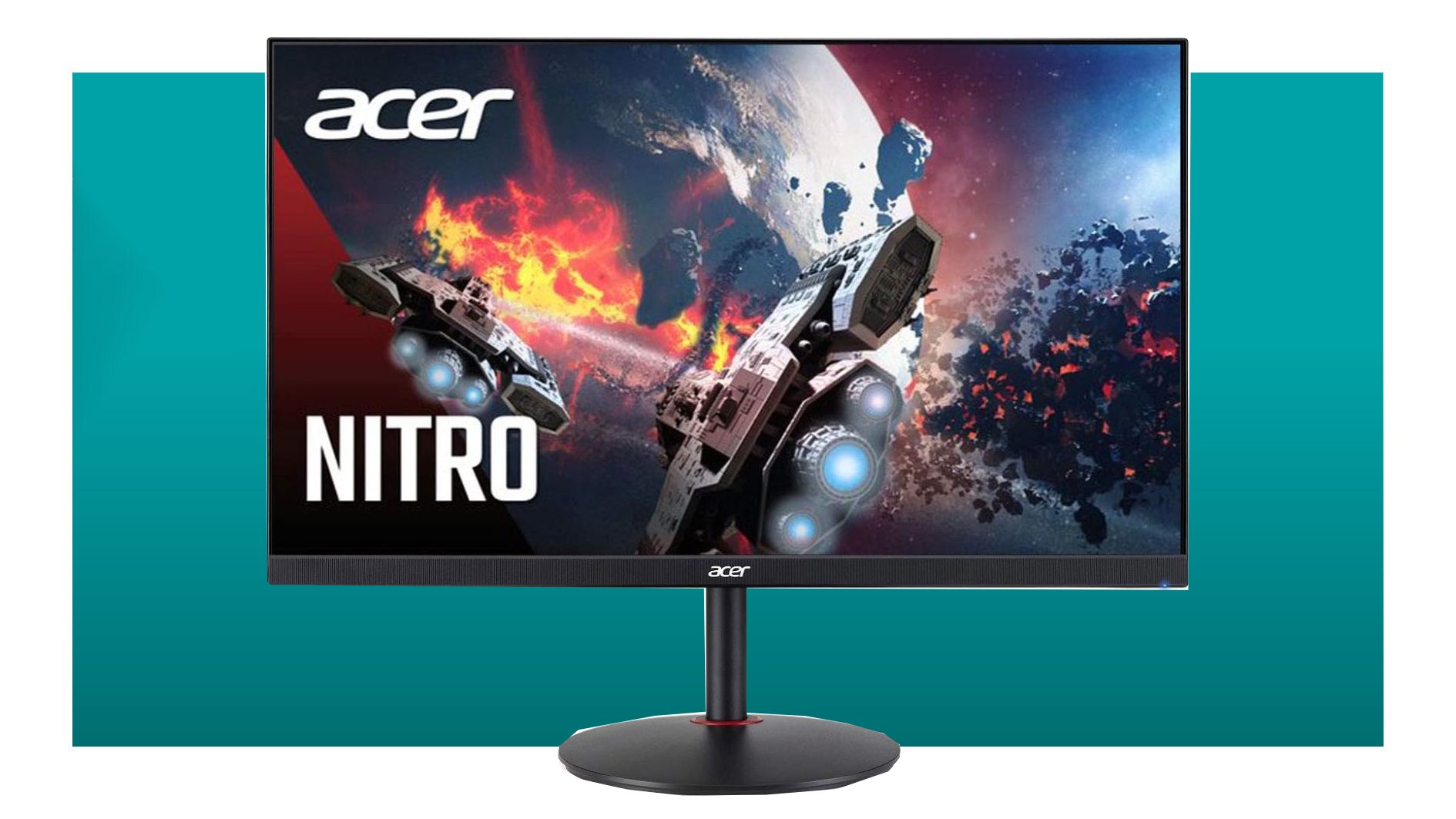
Acer Nitro XV272U | 27-inch | 170Hz OC | 1440p | IPS | $299.99 $189.99 at Amazon (save $110)
Coming with FreeSync Premium, this monitor will see you through whatever GPU you have. This version can be overclocked to give you up to a 170Hz refresh, and it's also an IPS. Not too shabby for that price.
Price check: Micro Center $224.99
27 inches, 170Hz refresh, a quality IPS panel and 1440p native resolution. What more do you need from a gaming monitor? In a word, nothing, especially when you can have all that for just $189.
Yup, the Acer Nitro XV272U has been given the Amazon Prime Day treatment and as someone who reviews these things for a living, I can tell you it's an absolute steal. In fact, the only problem is that Nvidia has recently decided that 1440p GPUs start at $599 in the RTX 4070.
- We're curating all the best Amazon Prime Day PC gaming deals right here.
The $399 RTX 4060 Ti is pitched as a 1080p GPU. And with just 8GB of VRAM running over a measly 128-bit bus, that's pretty much correct. Luckily, you can currently grab an AMD 6700 XT for just $299, and that comes with at least as good 1080p raster performance as the RTX 4060 Ti, plus more VRAM and bandwidth for 1440p duties.
As an overall gaming proposition, 1440p and 170Hz is comfortably preferable to 1080p at almost any refresh. Sure, if you're really serious about esports, then you're going to want a 1080p panel with a refresh high enough to give you a nosebleed.
But that's not most of us, is it? A 1440p panel scores with much more image detail, which can really help in terms of allowing more space for menus and tools in strategy games, and also allow you to see the latests graphics fests in all their glory.
You'll be grateful for the extra pixels back on the Windows desktop. Moreover, this Acer has no real weaknesses. It's rated at 350 nits peak brightness, which is plenty, and 1ms for response.
Sure, it only has the most basic HDR support, there's no local dimming. But then true HDR panels costs multiples of this monitor. No, this thing concentrates on delivering the important stuff and it's fantastic that you can grab such a well specified display for so little money.
My second pick is the monitor on which I am typing these very words. It's the ASRock Phantom PG34WQ15R2B, which I reviewed recently. Personally, I really appreciate the ergonomics of 34-inch 21:9 ultrawide panels, both for multi-tasking in Windows and for the genuinely heightened immersiveness in games. I wouldn't want to go back to a conventional 16:9 widescreen monitor.
ASRock Phantom PG34WQ15R2B | 34-inch | 165Hz | 3440 x 1440 | VA | $379.99 $294.99 at Newegg (save $85 after rebate)
You can't beat a high-refresh 34-inch ultrawide gaming panel in terms of bang for buck and ASRock gives you that particular bang for less buck than ever. As we found in our review, this 1ms 165Hz VA panel has no major weaknesses and makes for a really nice overall package for the money.
The ASRock has very solid all-round specs with 3,440 by 1,440 pixels, 550 nits brightness, 165Hz refresh and 1ms response, though the latter is by the less relevant MPRT metric. It's probably more like 2m GtG.
The response is a bit of a give away that this is a VA rather than IPS panel. A few years ago, that tended to mean pretty crappy pixel response. And a VA monitor isn't quite as quick, subjectively, as the best IPS screens. But trust me, it's still quick enough and you won't be disappointed. It's certainly not the ugly, blurry mess like VA panels of yore.
Anyway, it's currently yours for under $300 and it's so much screen for the money. You could spend three times as much on a 34-inch Alienware OLED panel and much of the time you'd only be getting a slightly better experience in subjective terms.
That's partly because the one major upside of VA tech is contrast. At 3,000:1, this panel is three times better than a typical IPS screen, and that closes some of the gap to OLED with its almost infinite contrast.
Again, this isn't a true HDR monitor, but the subjective experience is a lot closer to a premium OLED equivalent than you would countenance given the price.
Gigabyte M32UC | 32-inch | 4K | 144Hz | FreeSync Premium Pro | $629.99 $559.99 at Amazon (save $70)
Here's our pick for the best budget 4K gaming monitor, which you can check out in greater detail in our M32UC review. It's even cheaper today than back when we first saw it, however. It's a gloriously simple panel with a no-frills look paired with a speedy refresh of up to 144Hz and a handy USB hub. Our Jacob uses this monitor every day.
Price check: Newegg $599.99
Beyond those two screens, well, increasingly compromises have to be made. I like the Gigabyte M32UC for serving up proper high-refresh 4K visuals for sensible money, as did Jacob when he reviewed it.
But the prospect of a GPU capable of high-refresh 4K gaming is currently a world of pain in pricing terms, that's the problem, though you can at least now grab an AMD 6950 XT for under $600.
The Alienware 34 AW3423DWF is also a fabulous bit of cutting-edge OLED kit that really benefits from its glossy anti-glare coating. It's now cheaper than ever at $900, I just slightly struggle with the 3,440 by 1,440 resolution at this price point.
Alienware 34 AW3423DWF | 34-inch | 165Hz | QD-OLED | $1,099.99 $899.99 at Dell (save $200)
This is one of the best gaming monitors to buy right now, not the least bit because it's the cheaper FreeSync version of this screen. It's a stunning OLED panel, for a reasonable price, and with excellent gaming credentials. You can read our Alienware QD-OLED review for more. While there are many excellent OLEDs out this year, with a tasty discount we certainly like this one out of the lot.
Price check: Best Buy $999.99
The HDR performance is spectacular and the pixel response is out of this world. But it's not three times the experience you get with that excellent ASRock.
So, yeah, my top two deals are hard to beat. You can spend many times the money and not get a dramatically better actual gaming experience. Depending on whether you prefer the more conventional 16:9 format or ultrawide thrills, they really do represent all the monitor you really need at remarkably accessible price points. It's just a pain that suitable GPUs to pair with them tend to be so pricey.
The biggest gaming news, reviews and hardware deals
Keep up to date with the most important stories and the best deals, as picked by the PC Gamer team.

Jeremy has been writing about technology and PCs since the 90nm Netburst era (Google it!) and enjoys nothing more than a serious dissertation on the finer points of monitor input lag and overshoot followed by a forensic examination of advanced lithography. Or maybe he just likes machines that go “ping!” He also has a thing for tennis and cars.
